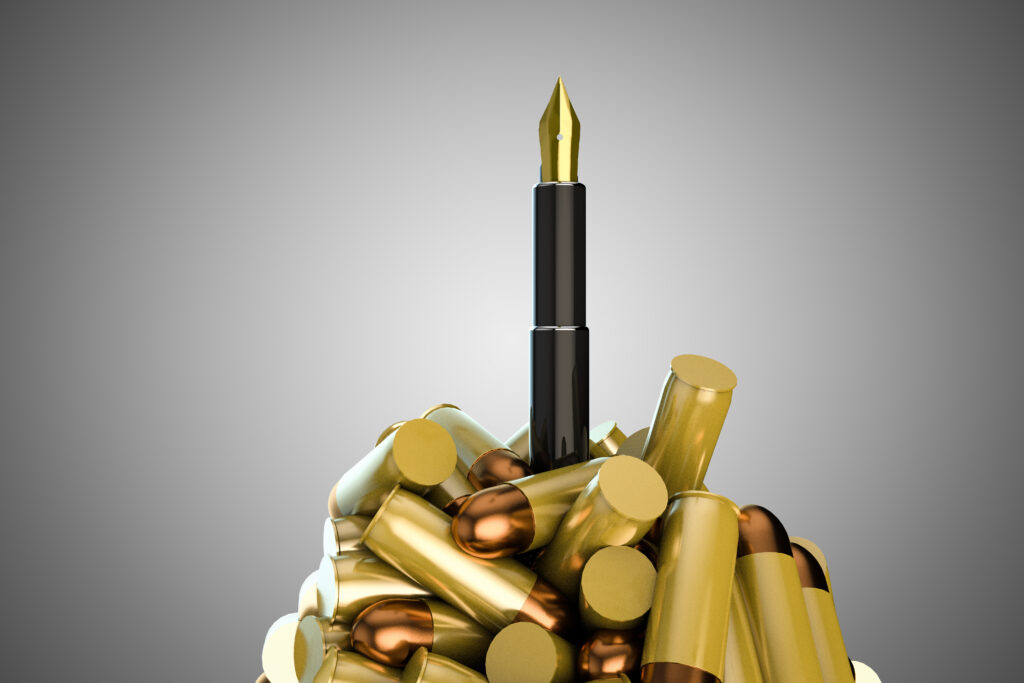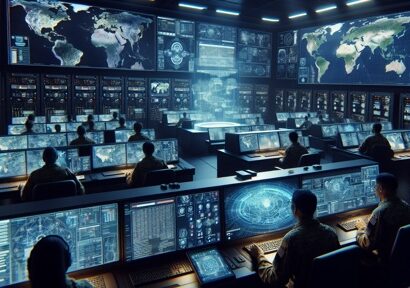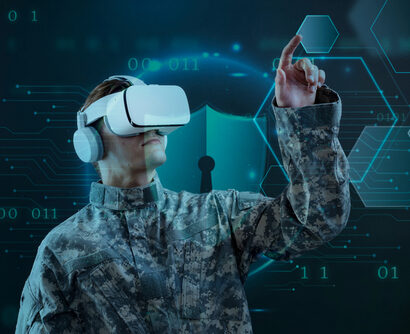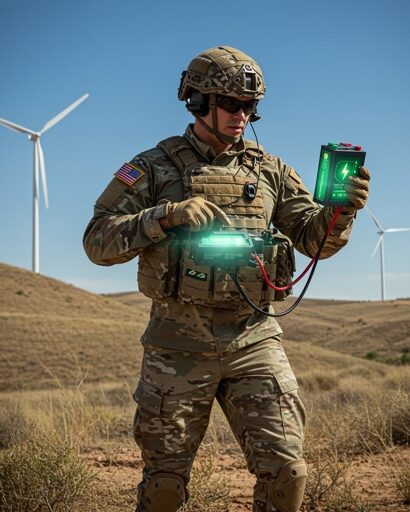Abstract: Armed forces play an essential role in public diplomatic efforts. By conducting peacekeeping and human-centric operations, participating in international military exercises, and international engagement in humanitarian assistance, the armed forces effectively support public diplomacy. These missions provide revenue for exporting foreign policy. Active service of military members on the ground has the potential to end with practical diplomatic results. Unlike traditional diplomacy, carried out only in embassies and consulates and only by a limited number of people appointed by the state, public diplomacy is carried out by more than one entity. In this case, diplomacy is carried out transparently, not behind closed doors. Even though military activities and diplomacy might appear to be contrary actions, they are closely aligned.
Problem statement: How can armed forces positively contribute to public diplomacy when deployed in an operational theatre?
So what?: The armed forces have to effectively support public diplomacy by conducting human-centric operations, participating in international military training exercises, and engaging in humanitarian assistance.

Public Diplomacy on the Lowest Levels
“Diplomacy and defense are not substitutes for one another. Either alone would fail.”
—John F. Kennedy
Lieutenant Colonel Jason Morris, commander of the 3rd Battalion, 5th Regiment, U.S. Marine Corps, called “Darkhorse,” described the Sangin District of Helmand Province in Afghanistan as “the most dangerous place in Afghanistan, a place where you could not move outside of the district center without getting shot.” One thousand U.S. Marines from his Battalion were deployed there during Operation Enduring Freedom. It was a place of intense fighting, from 2010 to 2011, in which the U.S. Marines experienced the greatest number of casualties during the war.[1] When the numbers of casualties started to rise, the Marines took advantage of their excellent working relations with district elders to draft the Sangin Security Agreement. This agreement brought together district elders, the coalition forces, and the Afghan government to discredit the Taliban in that area.[2]
Consequently, the agreement helped to reduce coalition casualties and improved public perception regarding the U.S. military’s goodwill among the Afghan population. However, that would not have been possible without the Marines’ tactical level diplomacy and the ties they built with local district elders. The global public may not have always been aware of this agreement. However, it highlighted the importance of successful diplomacy between military forces and civilians in the operational theatre. Successful diplomacy between military forces and civilians potentially creates a condition that enables national security objectives.[3]
The Armed Forces as Diplomacy Asset
Public diplomacy involves a method used by both the government and individuals to impact public attitudes and positions, whether legitimately or by indirect implication, to affect different decisions of another governmental administration.[4] Public diplomacy, as a non-governmental concept, consists of actors and systems taking their part in a network of equally beneficial relationships to function in a global environment.[5] Its activities are carried out by several different actors such as ministries, agencies, official institutions, non-governmental organizations, and media.[6] All these actors work towards effectively achieving foreign policy objectives and promoting a better perception of a country. It is, therefore, worth exploring whether or not there are positive contributions made by the Armed Forces concerning public diplomacy. Understanding what kind of military activities might enhance the positive perception of a country and support for public diplomacy internationally is vital to representing the armed forces as a supporting apparatus for its government. The Armed Forces might effectively support public diplomacy by conducting peacekeeping operations, human-centric operations, participating in international military training exercises, and engaging in humanitarian assistance.
The Armed Forces might effectively support public diplomacy by conducting peacekeeping operations, human-centric operations, participating in international military training exercises, and engaging in humanitarian assistance.
Peacekeeping operations refer to the deployment of military elements or law enforcement agencies in conflict zones. The UN Department of Peace Operations currently leads 14 peacekeeping operations.[7] These operations are working based on a multi-level approach that consists of creating a secure and safe environment and supporting legitimate governance. The success of the military in peacekeeping operations enhances the positive public perception of the contributing country.
For example, in 1950, Turkey sent its troops to South Korea to support UN military efforts during the Korean War.[8] Turkey’s involvement enhanced its reputation on the international stage and brought political and military benefits. Today, Turkey, as a NATO member, contributes to several NATO-led operations. Its participation in Afghanistan has had a decisive role in establishing peace and has helped the country’s development in social, cultural, and military aspects. As a result, the crucial decision to send troops to the Korean war created a long-lasting image of a reliable global ally on the world stage, allowing Turkey to enter NATO. Furthermore, its efforts brought military benefits and allowed them to establish cooperation in the economic, military, diplomatic, and cultural arena.[9]
Bosnia-Herzegovinian participation in international peacekeeping is another crucial example of a responsible member of the international community contributing to global security. The Armed Forces of Bosnia and Herzegovina successfully demonstrated their commitment to peacekeeping operations in Ethiopia, Eritrea, Iraq, Afghanistan, Congo, Mali, and the Central African Republic.[10] The engagement of the Armed Forces of Bosnia Herzegovina in several UN-, EU- and NATO-led peacekeeping missions demonstrates Bosnia and Herzegovina’s commitment. While professionally and responsibly executing their prescribed missions and tasks abroad, the armed forces make significant progress in representing their countries.
Furthermore, Bosnia Herzegovina moved from relying on international assistance to actively participating in exercises leading to peace and stability in UN- and NATO-led missions. With these actions, the Armed Forces of Bosnia Herzegovina are recognized as a contributing factor to the country’s progress toward Euro-Atlantic integration.
Risks and Misperceptions
However, there are risks when using armed forces as a diplomatic tool. On the one hand, accountability of peacekeeping operations may be stained by the unprofessional acts of participating military members or through the contributing country taking an irresponsible approach towards establishing peace. Those actions lead to a negative perception of the public towards the contributing country. India’s, China’s and Russia’s involvement in peacekeeping missions are less of a contribution to peacekeeping and international aid; it is an investment with anticipated returns.[11] Russia is the second-largest exporter of arms globally and a significant supplier to African states. Russia provides military training in its diplomacy in the Central African Republic, directly producing financial benefit for Russia.[12] Not only Russia but also India and China benefit from their major peacekeeping roles. Their involvement enables them to build economic and diplomatic ties with many less developed countries in Africa that are abundant in natural resources.[13] Even though it might seem only as serving a country’s national interest, their peacekeeping involvement does reflect an alignment of UN policies and their policy goals. Despite the negative perception that might occur, participation in peacekeeping is a method recognized by governments to boost a country’s international prestige.
The second contributing factor of a country’s armed forces in supporting public diplomacy is its involvement in international military exercises. Although a country’s approach to peacekeeping might produce an undesirable image, it is possible to mitigate such adverse outcomes by partaking in global military exercises. To build their military capacities, nations are strengthening their cooperation with other nations’ service members through participation in international military exercises. This factor has two key features: public misinterpretation of military training and developing the image of a reliable ally.
Regarding the former, conducting multinational military exercises may have adverse geopolitical and diplomatic effects. For example, Exercise Trident Juncture 18 was the largest exercise conducted by NATO and its alliances since the Cold War.[14] The exercise aimed to train NATO forces to operate together and be able to respond to any intimidation. Norway’s participation in NATO exercises illustrates how a country can send the message that it can rely on help from more powerful allies to discourage aggression from a larger neighbor.[15] Other small NATO members near Russia, such as the Baltic states, have proven proficient at doing the same thing. As a countermeasure, the concerned Kremlin tracked NATO activity conducted close to their border and took additional measures for its security.[16] Sometimes military exercises can be seen as aggregation in unstable areas, and the perceived aggression can escalate into hostility. On one side, international military exercises sometimes may be negatively interpreted, but on the other side, they might enhance the compelling image of a trustworthy partner. This ultimately addresses the other feature of participating in international joint military exercises, namely developing the image of a reliable partner. These exercises could be used diplomatically to build confidence, operational skills, and share best practices within the forces of countries.
For instance, Exercise African Lion is U.S. Africa Command’s (AFRICOM) flagship program in Northern Africa to build partner-nation capacity and interoperability.[17] Working and training together brings familiarity among military members from different nations. AFRICOM agrees that “the exercise aims to promote the stability and security of the region by working with long-time partners and strategic friendships.”[18] Building an image of a reliable partner helps developing long-term relationships. Building trust is the basis of credibility and influence among countries.
Building Bridges
Public diplomacy is not about winning hearts and minds. It is about building solid relationships. By their effective long-term relationships in public diplomacy, governments create an enabling environment for governmental policies.[19] During a joint naval exercise in the Strait of Malacca, the participating countries China, Malaysia, and Thailand demonstrated the mutual will of their armed forces. The joint exercise also strengthened practical exchanges and cooperation and enhanced the abilities of armed forces to respond to numerous security threats jointly.[20] Military exercises might be a component of an enigma. Still, they attract attention in a changing strategic and diplomatic atmosphere that makes military conflict more likely.[21]
Whether at home or abroad, humanitarian assistance is a vital military mission that influences public opinion. Using the Armed Forces in times of need creates a natural association between military involvement and relief. Civilians often expect the military to assist in the immediate aftermath of emergencies. The armed forces in this kind of operation demonstrate active engagement in public diplomacy by providing basic life necessities and showing a side of the military that many never see.[22] Positive public attitudes toward the U.S. increased dramatically in the aftermath of the 2004 tsunami. The percentage of Indonesians who said they held favorable views of the U.S. increased from 15 percent in 2003 to 38 percent in 2005.[23] When required, the U.S. military is at the forefront of rescue and humanitarian activities, and it is an example of public diplomacy activities. With the technological possibilities and hierarchical solid structure, the place and effectiveness of the armed forces in such activities is indisputable.[24] Especially in regions where non-governmental organizations are challenging to reach due to security, the military is indispensable in these activities.
Using the Armed Forces in times of need creates a natural association between military involvement and relief.
On the other hand, positive and negative contrast of public perception in providing humanitarian relief for common geographic, cultural, and commercial interests may call into question the motives of the involved country.[25] The relationship between China’s humanitarian engagements and its international economic interests seems to reflect the geographic proximity of China’s humanitarian assistance partners to the trade routes upon which the Chinese economy depends.[26] In contrast, the positivity of humanitarian assistance could become counterproductive along the thin line between contribution and presence.[27] In some countries, the military represents the internal power of an authoritarian government and local people are often fearful of an increased presence of the armed forces, whether local or foreign.[28] Generally, during humanitarian assistance activities, military forces represent their country and its culture and make significant, positive contributions by exporting moral support and creating a powerful image of the contributing country.
Armed Forces – A Key Factor on the Ground
Armed forces play an essential role in public diplomatic efforts. By conducting peacekeeping and human-centric operations, participating in international military exercises, and international engagement in humanitarian assistance, the armed forces effectively support public diplomacy. These missions provide revenue for exporting foreign policy. Active service of military members on the ground has the potential to end with practical diplomatic results.[29] Unlike traditional diplomacy, carried out only in embassies and consulates and only by a limited number of people appointed by the state, public diplomacy is carried out by more than one entity, where diplomacy is carried out transparently, not behind closed doors. Even though military activities and diplomacy might appear to be contrary actions, they are closely aligned.
Anes Zukić is an officer in the Armed Forces of Bosnia-Herzegovina. He holds a Master of Military Arts and Sciences degree from the US Army Command and General Staff College. The views contained in this article are the author’s alone and do not represent the views of the Armed Forces of Bosnia-Herzegovina, the Ministry of Defense of Bosnia-Herzegovina, or the Government of Bosnia-Herzegovina.
[1] Tom Bowman, “An Afghan Hell On Earth For ‘Darkhorse’ Marines,” National Public Radio, October 31, 2011, Accessed July 16, 2019, npr.org/2011/10/31/141724272/an-afghan-hell-on-earth-for-darkhorse-marines.
[2] Brian Jones, “Afghan, Coalition Leaders Broker Peace Deal in Sangin,” Defense Visual Information Distribution Service, January 1, 2011, Accessed July 20, 2019, dvidshub.net/news/62978/afghan-coalition-leaders-broker-peace-deal-sangin.
[3] Idem.
[4] H. Benno and Timothy Coombs, “Public relations and public diplomacy: Conceptual convergences,” Public relations review 18, no. 2 (1992): 137-147.
[5] ” What is Public Diplomacy?” Center on Public Diplomacy, accessed July 20, 2019, http://www.google.com/intl/en/privacypolicy.html.
[6] Hatice Dogan, Türk Silahli Kuvvetlerinin Kamu Diplomasisi Faaliyetleri (Public Diplomacy activities of Turkish Armed Forces), Journal of Security Science (2014), 3. 67-90. Doi:10.28956/gbd.283039.
[7] United Nations. “Where We Operate Peacekeeping,” United Nations. Accessed September 19, 2019, https://peacekeeping.un.org/en/where-we-operate.
[8] Richard Weitz, Turkey: Forgotten Ally in a Forgotten War, Retrieved from https://www.realclearworld.com/articles/2012/07/27/turkey_the_forgotten_ally_in_the_forgotten_war_100157.html.
[9] Hatice Dogan, Türk Silahli Kuvvetlerinin Kamu Diplomasisi Faaliyetleri (Public Diplomacy activities of Turkish Armed Forces). Journal of Security Science (2014), 3. 67-90, Doi:10.28956/gbd.283039.
[10] Publication of Ministry of Defence of Bosnia and Herzegovina published in 2018, Retrieved from https://www.mod.gov.ba.
[11] Institute for Security and Development Policy (2018, March), China’s Role in UN Peacekeeping, Retrieved from http://isdp.eu/publication/chinas-role-un-peacekeeping/.
[12] K. Goodison, Russia in the Central African Republic: Exploitation Under the Guise of Intervention, Philologia, 11(1), 34–42. DOI: http://doi.org/10.21061/ph.177.
[13] David Axe, Why South Asia Loves Peacekeeping (2010), Retrieved from https://thediplomat.com/2010/12/why-south-asia-loves-peacekeeping/.
[14] Ralph Clem, Today, NATO begins a huge military exercise. Here’s what you need to know (2018), Retrieved from https://www.washingtonpost.com/news/monkey-cage/wp/2018/10/25/today-nato-begins-a-huge-military-exercise-heres-what-you-need-to-know/.
[15] Tormod Heier, “Influence and Marginalisation,” Norway’s Adaptation to US Transformation Efforts in NATO, 1998–2004, 2006, 35-36.
[16] MilitaryTimes, The Associated Press, Russia threatens response to huge NATO exercise, says its new weapons will be unrivaled anywhere (2018), Retrieved from https://www.militarytimes.com/news/your-military/2018/10/25/russia-threatens-response-to-huge-nato-exercise-says-its-new-weapons-will-be-unrivaled-anywhere/.
[17] U.S. AFRICOM Public Affairs, Multinational Participation Plays Key Factor to Exercise African Lion (2014), Retrieved from https://www.africom.mil/media-room/photo/12059/multinational-participation-plays-key-factor-to-exercise-african-lion.
[18] Tatum Vayavananda, “Multinational Participation Plays Key Factor to Exercise African Lion,” Marine Corps Forces Europe, 14 Apr. 2014, Accessed September 19, 2019. https://www.marforeur.marines.mil/News/News-Article Display/Article/521078/multinational-participation-plays-key-factor-to-exercise-african-lion/.
[19] Joseph S. Nye, The New Public Diplomacy (2010), Retrieved from http://www.project-syndicate.org/commentary/the-new-public-diplomacy.
[20] Kristin Huang, China’s Military Reaches Out To Neighbours with Joint Drill (2018), Retrieved from https://www.scmp.com/news/china/diplomacy/article/2168558/chinas-navy-join-thailand-and-malaysia-training-exercise-strait.
[21] Thim Michal, Taiwan’s military exercise sends three loud and clear messages – to China, the US and its own people (2018), Retrieved from https://www.scmp.com/comment/insight-opinion/china/article/2149873/taiwans-military-exercise-sends-three-loud-and-clear.
[22] Marissa Cruz, How the U.S. Military Engages in Public Diplomacy (2015), Retrieved from https://www.uscpublicdiplomacy.org/blog/how-us-military-engages-public-diplomacy.
[23] Richard Wike, Does Humanitarian Aid Improve America’s Image? (2012), Retrieved from https://www.pewresearch.org/global/2012/03/06/does-humanitarian-aid-improve-americas-image/.
[24] G. Işikand O. Yildiz, Kamu Diplomasisinin Askerî Boyutu: ABD Muharip Komutanlıklarının Kamu Diplomasisi Faaliyetleri. Military Aspect of Public Diplomacy: Public Diplomacy Activities of US Combatant Commands (2018), Retrieved from https://www.semanticscholar.org/paper/Kamu-Diplomasisinin-Asker%C3%AE-Boyutu%3A-ABD-Muharip-Kamu-I%C5%9Fik-Yildiz/d5b4345e42d990dd9d81addd01a01f86812783f6.
[25] Muhammad Daim Fazil, “The China-Pakistan Economic Corridor: Potential and Vulnerabilities.” The Diplomat, May 29. Accessed March 12, 2016. http://thediplomat.com/2015/05/the-china-pakistan-economic-corridor-potential-and-vulnerabilities/.
[26] J. Smith-Steven, Winning Friends and Influencing People with Guns: Understanding the Growth Of China’s Military Diplomacy, Retrieved from https://digital.lib.washington.edu/researchworks/handle/1773/36456.
[27] Fiona Bare, “Competition, Compromises, and Complicity: An Analysis of the Humanitarian Aid Sector.” (2017).
[28] Frederick Cuny, Use of the Military in Humanitarian Relief (1989), Retrieved from https://www.pbs.org/wgbh/pages/frontline/shows/cuny/laptop/humanrelief.html.
[29] Ziad Achkar, The Importance of the Soldier-diplomat in the 21st Century (2010), Retrieved from http://blogs.shu.edu/diplomacy/2014/12/the-importance-of-the-soldier-diplomat-in-the-21st-century/






